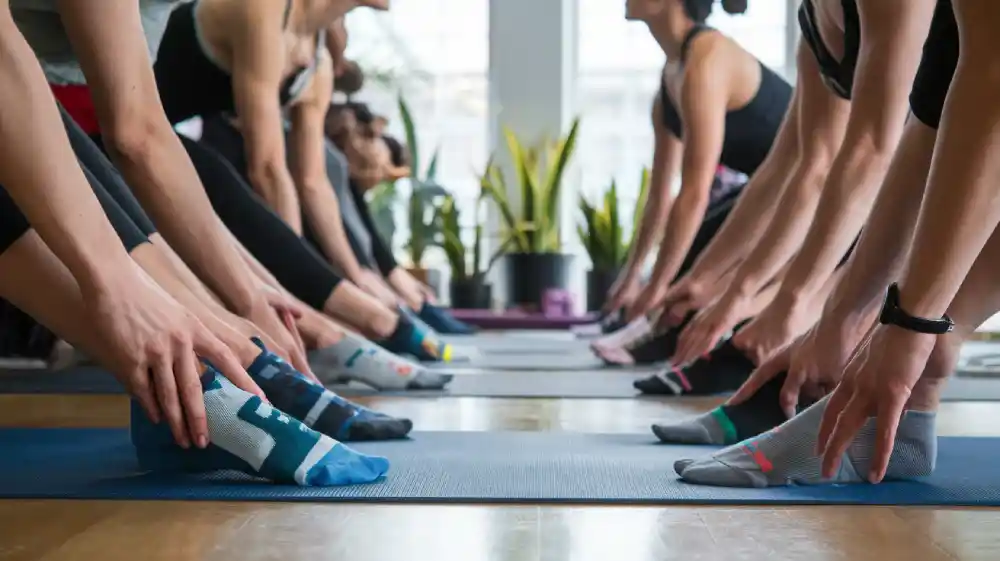
Yoga has transcended its traditional barefoot origins, evolving into a practice that embraces modern innovations. As practitioners increasingly seek comfort and performance, the demand for specialized gear such as yoga socks is skyrocketing. These socks are meticulously designed to enhance grip, moisture-wicking, and flexibility, catering to the unique needs of contemporary yogis. For brands and retailers, this presents a compelling opportunity to tap into a niche market that values both functionality and style. By offering yoga socks, you position your brand as a leader in fitness innovation, aligning with the evolving preferences of today’s practitioners.
The Traditional Barefoot Advantage in Yoga
Yoga, a practice deeply rooted in tradition, often begins with the simple act of removing one’s shoes. This humble gesture sets the stage for a deeper connection with oneself and the environment. Practicing without shoes is not just a casual choice but a deliberate step toward enhancing the yoga experience.
One of the immediate benefits of going shoeless is the improved grip and mind-body connection. The direct contact with the mat allows practitioners to feel the subtle movements of their body, enhancing balance and stability. This tactile connection fosters a heightened awareness, enabling a more profound engagement in each pose.
Beyond the physical benefits, the spiritual and philosophical dimensions of practicing without shoes are equally significant. In many traditions, being shoeless symbolizes a willingness to connect with the earth, representing humility and openness. This grounding experience is believed to cultivate inner peace and a sense of belonging.
In yoga philosophy, the act of going shoeless aligns with the principle of living in the present moment, free from the constraints of material possessions. It embodies the teachings of simplicity and mindfulness, encouraging practitioners to be fully present in their practice.
While the tradition of practicing without shoes is rich and meaningful, modern adaptations like yoga socks offer a way to honor this tradition while addressing contemporary concerns such as hygiene and additional grip. These innovations aim to preserve the essence of the shoeless practice while providing practical benefits for today’s yogis.
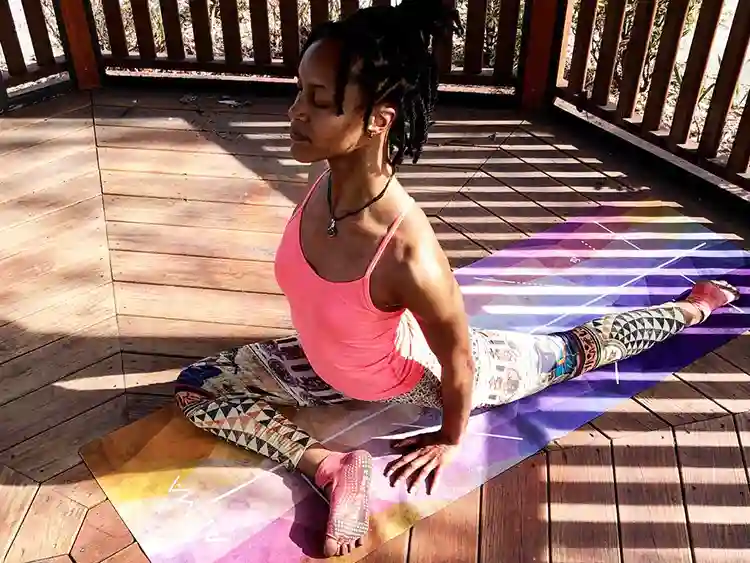
Who Exactly Needs Yoga Socks?
Yoga socks cater to a diverse array of individuals, each with unique needs and preferences. Understanding these distinct groups and scenarios is crucial for brands and retailers looking to tap into this niche market.
Professional Instructors
For yoga instructors who spend hours guiding classes, comfort and grip are paramount. Yoga socks provide the necessary support for extended sessions, ensuring stability during demonstrations and adjustments. Additionally, they offer a stylish option for those who wish to maintain a professional appearance.
Casual Practitioners
Casual yoga enthusiasts often appreciate the convenience of yoga socks, which allow them to practice without the discomfort of bare feet. These socks are ideal for those who practice in various environments, offering ease of transition from yoga sessions to everyday activities.
Health-Conscious Individuals
Individuals focused on wellness may seek yoga socks with specialized features such as compression and moisture-wicking properties. These enhancements not only promote comfort but also address specific health concerns, making them a valuable addition to a wellness-oriented product line.
Specific Scenarios
- Cold Environments: Yoga socks offer thermal regulation, making them ideal for practitioners in chilly studios or during colder months.
- Slippery Surfaces: Enhanced grip provided by these socks ensures safety and prevents slips on sweat-prone mats.
- Shared Spaces: In gyms or community centers, yoga socks promote hygiene by reducing direct contact with shared mats.
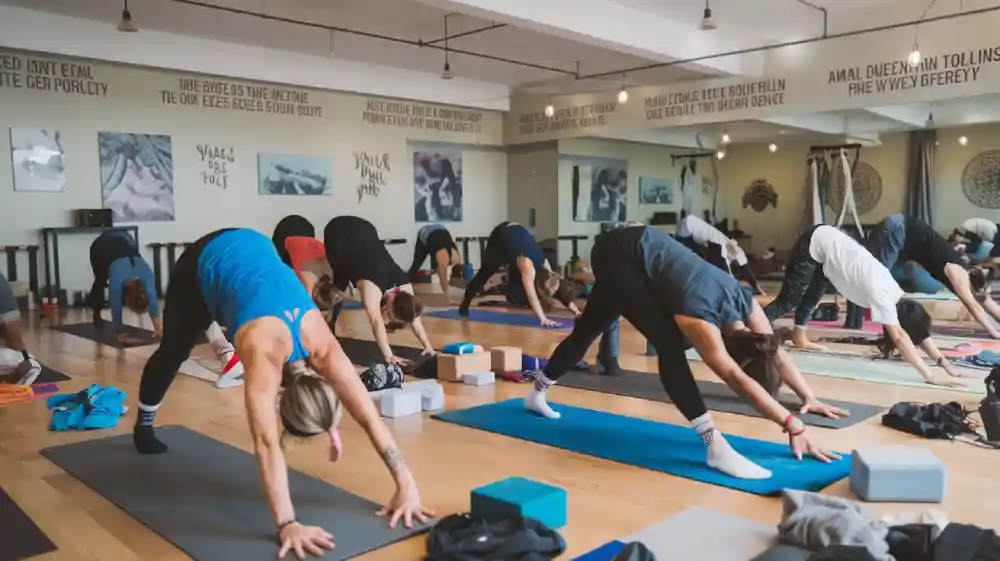
When and Why to Choose Yoga Socks?
- Environmental Factors: Mastering Cold and Slippery Conditions
In the dynamic world of yoga, the environment plays a crucial role in enhancing or hindering your practice. Imagine stepping into a chilly studio or navigating a sweaty mat. Specialized footwear offers a solution by providing warmth in cold settings and preventing slips on slick surfaces. Designed with grip-enhancing materials, they ensure stability, allowing you to focus on your poses without worrying about losing balance.
- Health Considerations: Enhancing Circulation and Comfort
Beyond the environmental benefits, specialized footwear caters to health-conscious individuals by improving circulation and comfort. For those with foot sensitivities or circulation issues, these socks often feature compression and moisture-wicking properties. Compression aids in blood flow, while moisture-wicking materials keep feet dry and comfortable, making them ideal for long sessions. Addressing these health concerns, they contribute to overall foot health and well-being.
- Hygiene and Practicality in Shared Spaces: A Clean Approach
In shared environments like gyms or yoga studios, maintaining hygiene is paramount. Specialized footwear acts as a protective barrier, minimizing direct contact with potentially germ-laden mats. This not only keeps your feet clean but also allows for seamless movement between practice spaces and other areas. Choosing such footwear ensures both cleanliness and practicality, making it a smart choice for any yoga enthusiast.
Types of Yoga Socks and Their Benefits
Yoga socks come in various forms, each designed to meet specific needs:
- Anti-Slip Socks
Ideal for dynamic yoga styles like Vinyasa or Power Yoga, these socks feature grippy soles that prevent slips during intense poses. For businesses, anti-slip socks can attract customers who prioritize safety and stability in their practice.
- Moisture-Wicking Socks
Perfect for hot yoga environments, these socks are designed to keep feet dry by wicking away sweat. This feature is crucial for preventing odor and blisters, making them a popular choice among practitioners of hot yoga.
- Toe Socks
These socks allow for individual toe movement, enhancing flexibility and comfort during restorative or Yin Yoga. They are a great option for customers seeking a natural foot feel without compromising on support.
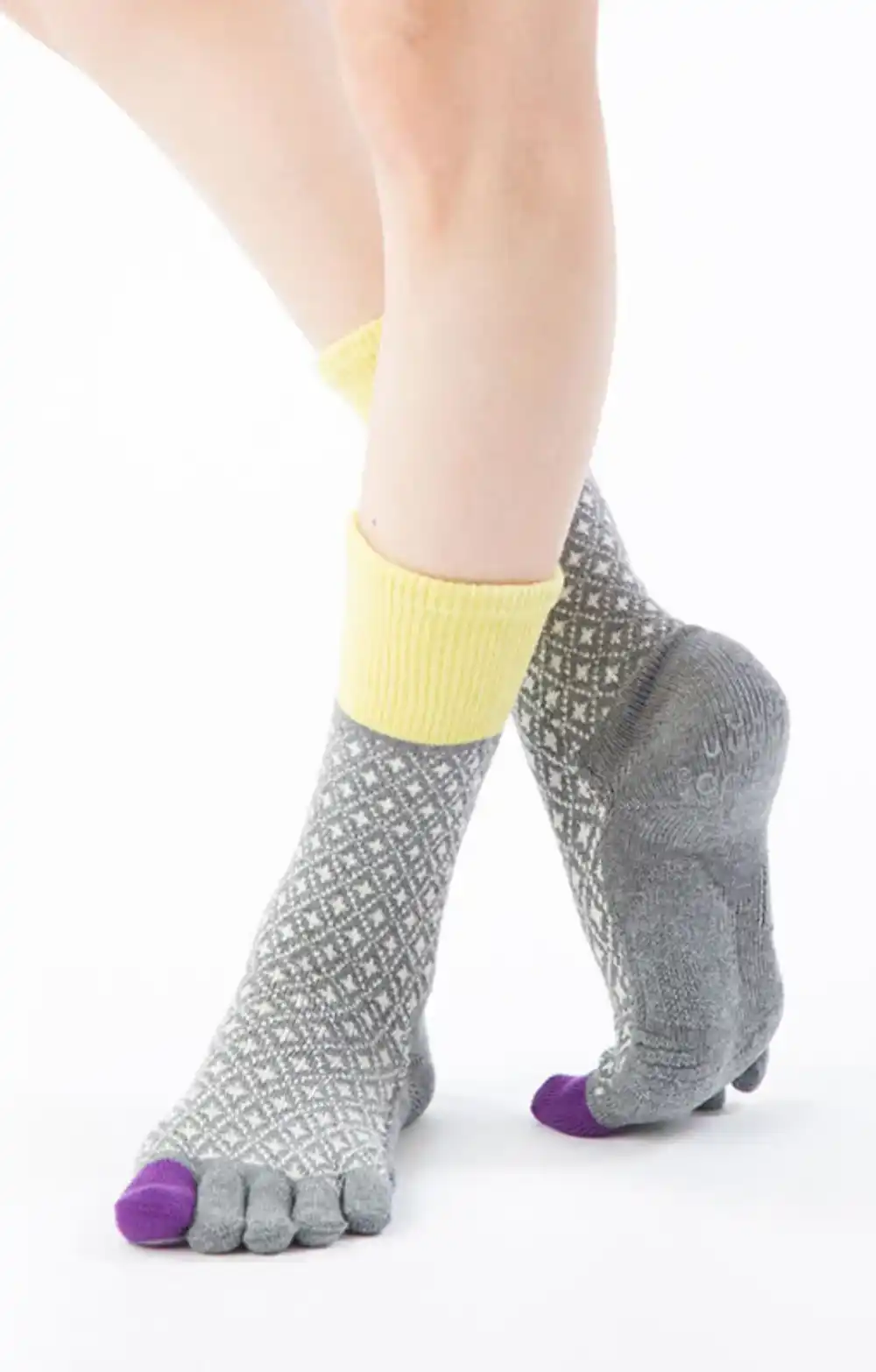
How to Choose Yoga Socks?
When selecting yoga socks, certain features are essential:
- Grip: Ensures stability during poses, preventing slips and falls.
- Flexibility: Allows for a full range of motion, enhancing comfort and performance.
- Breathability: Keeps feet dry and cool, reducing the risk of odor and discomfort.
Choosing Based on Yoga Style and Customer Preferences, understanding the yoga styles your customers practice can guide your product selection:
- Hot Yoga: Opt for moisture-wicking socks that keep feet dry and comfortable.
- Restorative Yoga: Consider comfortable toe socks that allow natural foot movement.
- Dynamic Styles: Anti-slip socks are a must for stability during active poses.
By offering a range of specialized yoga socks, businesses can cater to diverse customer preferences, increasing satisfaction and loyalty.
Addressing Potential Drawbacks
When introducing yoga socks into your product lineup, it’s crucial to consider potential challenges and how to mitigate them effectively. This section explores key areas to ensure customer satisfaction and product success.
- Mitigating Slipping Issues: Quality and Fit Considerations
Slipping is a significant concern for yoga practitioners, and addressing this issue can enhance product trustworthiness. High-quality grip materials, such as rubberized soles or textured patterns, are essential for enhancing traction on yoga mats. Additionally, ensuring a proper fit is paramount; socks that are too loose or too tight can compromise grip and comfort. By prioritizing these elements, you can significantly reduce the risk of slipping.
- Balancing Freedom of Movement with Support
Yoga demands flexibility, and your socks should too. Opt for materials that allow a full range of motion while providing the necessary support to prevent injury. For instance, anatomical arch support can enhance stability without restricting movement. Consider different designs for various yoga styles, ensuring that each sock meets the specific needs of the practice.
- Customer Education: Maximizing the Benefits of Specialized Footwear
Empower your customers with knowledge. Provide them with tips on selecting the right socks, such as understanding sizing and the importance of material suitability for their yoga style. Include care instructions, like washing guidelines and drying tips, to extend the lifespan of the socks. Additionally, educate them on common mistakes, such as choosing the wrong size or improper use, to maximize the benefits of their yoga socks.
By thoughtfully addressing these potential drawbacks, you can enhance customer satisfaction and establish your brand as a leader in the yoga apparel market. Partner with us to deliver exceptional products that stand out in the competitive landscape.
Benefits for Brands and Retailers
Offering customized yoga footwear presents a unique opportunity for brands and retailers to enhance their market presence by tapping into a niche market that extends beyond traditional yoga practitioners. As the popularity of yoga continues to rise, so does the demand for specialized fitness gear. By catering to this growing demographic, businesses can also attract a broader audience of fitness enthusiasts who value high-quality, specialized products.
While yoga practitioners form a core segment, the appeal of specialized yoga footwear extends to a broader audience, including those engaged in Pilates, barre, and other fitness disciplines. By offering customized options, brands can attract consumers seeking specialized gear for their activities, thereby expanding their customer base.
Customized yoga socks allow brands to demonstrate a deep understanding of customer needs, fostering a sense of value and exclusivity. When customers feel that a brand caters specifically to their requirements, it enhances satisfaction and encourages loyalty. This personalized approach not only retains existing customers but also attracts new ones through word-of-mouth referrals.
Innovation is key to standing out in the competitive fitness industry. By partnering with a factory that offers customization options and quality assurance, brands can differentiate themselves from competitors. Such partnerships enable businesses to meet evolving customer demands and stay at the forefront of fitness trends, ultimately driving growth and success.
In conclusion, by embracing specialized yoga footwear, brands and retailers can tap into a niche market, enhance customer satisfaction, and maintain a competitive edge in the fitness market.
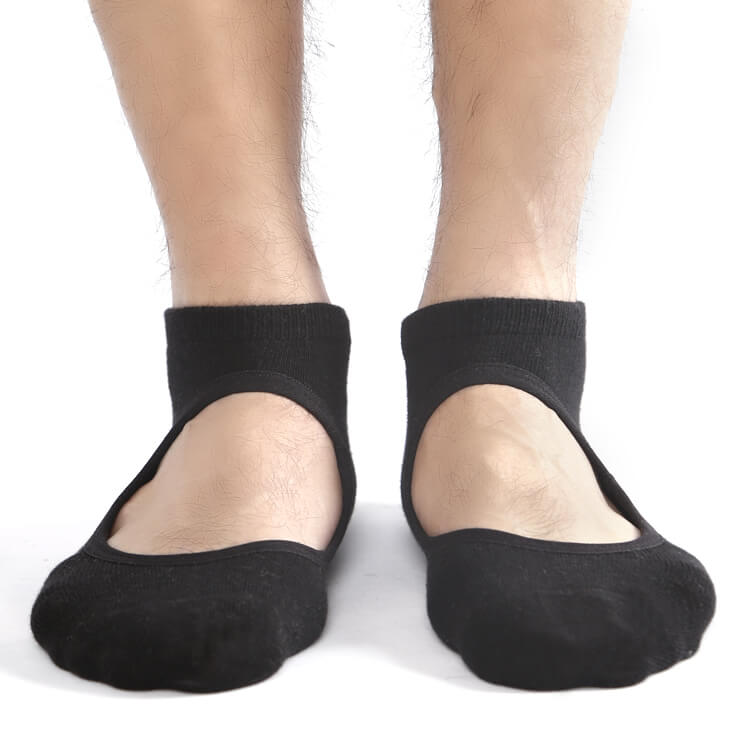
Customization Options for Brands
For brands and retailers, offering tailored yoga footwear is a strategic way to carve out a unique space in the market. By aligning products with your brand’s identity and values, you can create a cohesive and memorable experience for your customers. Customization allows you to infuse your logo, select color schemes, and choose materials that reflect your brand’s ethos, ensuring your offerings feel authentic and distinctive.
Customized Grip Material and Patterns
The grip material can be tailored to meet specific brand needs, with options including silicone, flocking, and PVC, all of which are environmentally friendly and OEKO-TEX certified. Different materials offer varying levels of anti-slip effectiveness and durability, allowing brands to choose based on usage scenarios. Grip patterns can also be customized, such as full sole, partial, or specific designs, to meet both functional and aesthetic requirements.
Customized Sizes and Lengths
Grip socks can be customized in various sizes and lengths, from short to mid-calf to long socks, ensuring a perfect fit for different usage scenarios and brand preferences. Proper sizing enhances comfort and anti-slip performance. Additionally, we provide international sock size charts to help brands select the most suitable sizes for their target markets.
Special Techniques and Features
For brands with unique requirements, a range of special techniques are available, including antimicrobial and anti-odor treatments, mesh construction, reinforced ribbing, terry soles, and arch support. These options ensure that the custom grip socks meet the specific needs of users, enhancing functionality and comfort.
Logo Customization
Brands can add their logo or brand identity to the socks using various techniques such as embroidery, printing, heat transfers, and jacquard. Customized logos enhance brand image and increase product uniqueness and recognition.
Customized Packaging
To enhance the overall image and market competitiveness of sock products, brands can also customize sock packaging. The material, design, and printing of the packaging can be tailored to reflect the brand style and market demand. Exquisite packaging not only enhances the added value of the socks but also attracts more consumer attention.
Conclusion: Embrace the Future of Yoga Practice
Yoga socks bridge tradition and innovation, offering grip, comfort, and hygiene for modern practitioners. By partnering with our factory, you can create customized solutions that align with your brand and meet customer needs. Elevate your product line and stand out in the fitness market. Let’s shape the future of yoga together—contact us today to get started.
FAQs
What are the benefits of yoga socks compared to practicing barefoot?
Yoga socks provide enhanced grip, warmth, and hygiene, making them ideal for cold environments, slippery surfaces, or shared spaces. They also offer support and comfort for those with foot sensitivities or circulation issues, while still allowing for a natural feel.
What customization options are available for yoga socks?
Brands can customize yoga socks with materials, sizes, lengths, logo, and special features like antimicrobial treatments or arch support. Logos can also be added through embroidery, printing, or jacquard techniques, and packaging can be tailored to reflect brand identity.
What materials are used in yoga socks, and are they eco-friendly?
Yoga socks are made from materials like silicone, PVC, and flocking, all of which are environmentally friendly and OEKO-TEX certified. Brands can also opt for sustainable fabrics to align with eco-conscious values.
Do you offer packaging customization for yoga socks?
Yes, we provide tailored packaging solutions, including material, design, and printing options, to enhance your brand’s image and different sales channels.
Can I request samples before placing a bulk order?
Yes, we offer sample services so you can evaluate the quality, fit, and design of the yoga socks before committing to a larger order.
